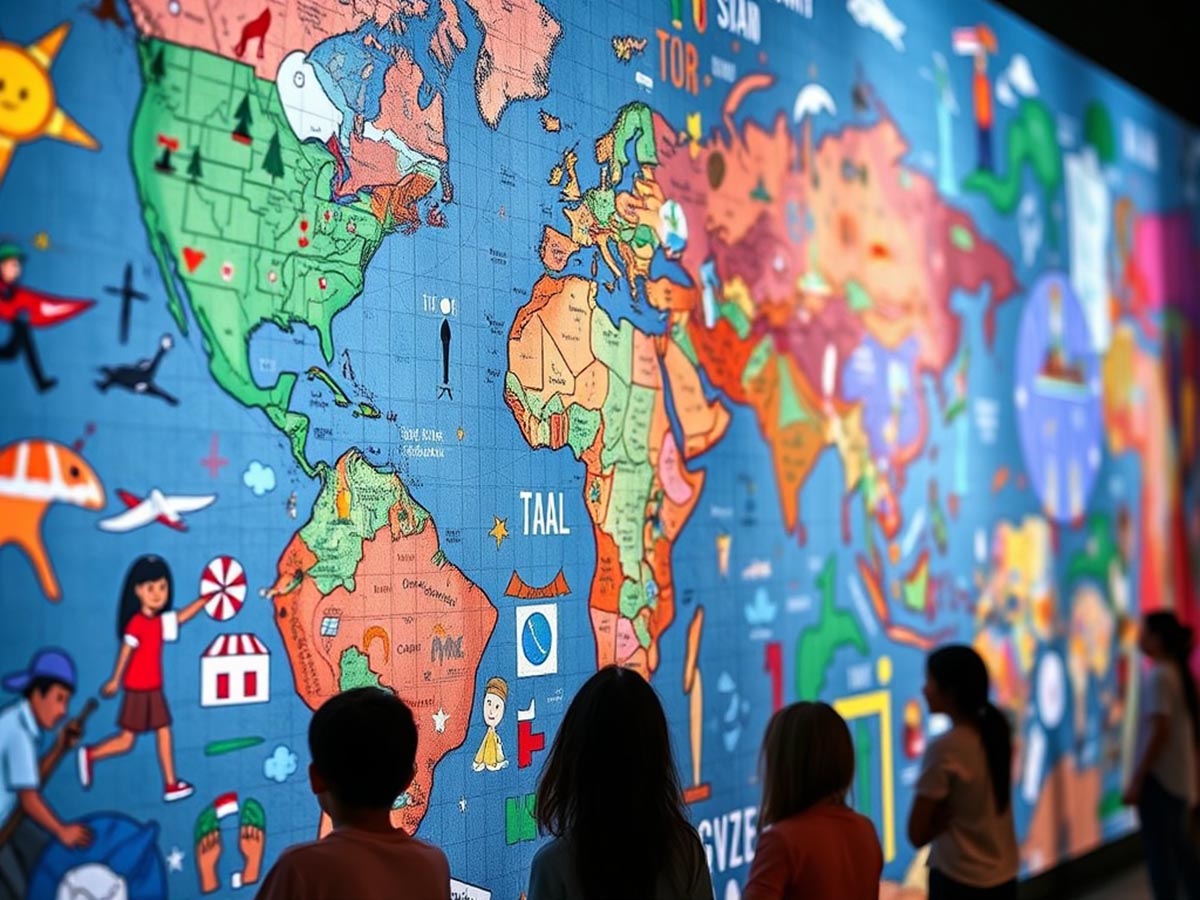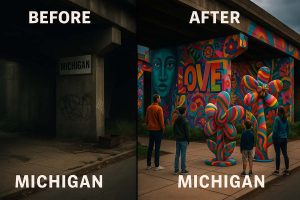
Technology and Art: How Modern Tools Empower Creative Programs in Small Schools
Quick Glance
- Affordable digital tools allow young artists to create, edit, and share their work with ease.
- Online interactions connect students, teachers, and artists across the globe.
- Data-driven decisions help small schools maximize limited time and budget.
Why This Topic Deserves Attention
Across many rural areas, small schools continue to operate with minimal facilities and tight budgets. When funds fall short, art often ends up being the first to go. But creative thinking plays a vital role in education. With the help of budget-friendly laptops, open-source software, and stable internet, these schools are changing their outlook. Despite limited classroom hours, young painters, dancers, and musicians now have meaningful chances to express their talents.
Affordable Devices, Real Impact
In the early days of computer labs, each unit cost a fortune. Today, even a basic tablet can serve as a digital sketchbook. In rural Argentina, a group of students animated a children’s story using a free app. They crafted a stylus out of a pencil and aluminum foil—no need for pricey graphics tablets. The outcome? Their work was accepted into a global virtual festival, and they earned mentorship from a professional animator in France.
Meanwhile, in the southwestern United States, an art teacher introduced digital printmaking using recycled desktops and free creative software. Students printed their work at a local 3D hub and sold it online as souvenirs. The class developed not just new skills but also raised funds for school supplies.
Borderless Classrooms
An art teacher from a remote village in Iceland wanted to introduce Yayoi Kusama’s techniques. She hosted a live session with a Tokyo gallery using an education-focused video app. Students learned directly from a curator halfway around the world. In another case, an Australian university started “Small Schools, Big Canvas,” a project that connected 50 schools across five continents. They worked together on a digital mural displayed in an online gallery. Distance did not prevent students from creating together.
Data-Backed Teaching Decisions
Technology supports more than just the creative process. In Kenya, an initiative uses cloud-based notebooks to monitor participation in drama clubs. If fewer students sign up, more acting workshops are added while reducing focus on stage design. Quick feedback loops like these prevent waste and improve planning.
In a U.S. charter school, a spreadsheet macro predicts when paint supplies will run out. By forecasting usage, the school saves up to 20% on materials every year. These small adjustments make a big difference.
Equal Access for Every Learner
In rural Norway, a student with hearing loss livestreamed her visual poetry with real-time captions. She was able to discuss her work with peers in Chile. At a public school in Peru with no instruments, a student practiced using a virtual drum kit on a mobile phone before a big competition. These moments show that it’s not the size of the school but the reach of imagination that defines success. And technology is what helps bring that imagination to life.
Challenges on the Ground
The path isn’t without its bumps. The first set of tablets, projectors, or 3D printers must be paid for somehow. Some parts of Central Asia don’t have reliable electricity. To adapt, teachers created hybrid schedules—students draw on paper first and upload their work once power returns.
Training also matters. A seasoned painter may feel uneasy with digital tools. A good fix? Peer mentoring. In South Africa, the “e-Mentor Arts” program connects rural teachers with retired designers through weekly voice calls. Over time, confidence grows naturally.
Success Stories from Around the World
Island School, British Columbia
Two small classes made a stop-motion film about their local history. They used a low-cost webcam and recycled paper. The film won a youth award at a digital festival in South Korea.
Rural Academy, Ghana
Thanks to a tech grant, the school received a lab of solar-powered tablets. Students created 3D sculptures based on their community’s cultural masks. Their digital work appeared in a virtual gallery visited by European collectors.
Mountain Village School, Nepal
No stable internet? No problem. The school saved an open-source library on an offline server. Months later, their scanned paintings became the cover of a digital art journal in Singapore.
Small Town Gymnasium, Finland
A grade 8 class built an interactive light display using Arduino boards. The sensors responded to wind pressure. A video of the project went viral, and the class earned sponsorship for future work.
Collaboration Between Schools and Industry
The growth of art programs doesn’t rest on teachers alone. Support from local businesses, incubators, and municipalities plays a huge part. In southern Chile, a fiber-optic company offered free afternoon bandwidth for a printmaking masterclass. In Eastern Europe, a local makerspace turned old laptops into learning tools. They also paid teens who wanted to learn basic IT.
Practical Tips for Teachers
Review What You Already Have
Make a list of unused desktops, phones, or projectors in storage. At a remote Alaska workshop, teachers discovered that a decade-old laptop could still handle frame-by-frame animation. It became an asset rather than e-waste.
Choose Free and Legal Software
Plenty of open-source programs like Krita and Blender are available. Animation templates can be translated into native languages, removing licensing concerns.
Build Global Relationships
Join teacher forums or enroll in open online courses. Lesson plans, asset packs, and feedback become accessible, turning any class into part of a larger community.
Support From Governments and NGOs
Some countries simplify tech imports by offering tax exemptions for school-related devices. In Rwanda, each tablet in the “Digital Schoolbag” program comes preloaded with creative software. UNESCO has also launched mini-grants for small public schools. These cover costs like 3D printing filament or online exhibit fees.
In Germany, the national culture fund offers travel stipends. Art teachers can attend media festivals across Europe and return with fresh techniques.
Building Tomorrow’s Mentors
Getting devices into classrooms isn’t enough. Teachers must feel equipped to use them. In Malta, a teacher training college launched a self-paced series on digital art education. Each five-hour module is free for public school teachers. Once completed, the teacher earns a credential they can share online—boosting their professional visibility.
In Chilean Patagonia, two teachers from opposite sides of the region observed each other’s classes via low-bandwidth video. In Japan, an artist-teacher group created the “One Tablet, One Artwork” challenge. Each participant designed an interactive poster with students and received peer reviews online. The experiment showed that a clear goal and active sharing matter more than fancy conferences.
How Communities Benefit Over Time
When children value the arts, local empathy increases. A mural made on a digital tablet can be projected on a public wall during festivals. In Uruguay, a school used virtual reality to record elders’ oral traditions. They created a multimedia archive that attracted tourists and academic grants.
There’s also an economic impact. Young people skilled in animation or audio editing carry talents they can offer remotely. Even in their hometowns, they can freelance for game studios overseas. More opportunities at home means fewer reasons to migrate.
Looking Ahead
Many experts predict wider use of immersive media. In Brazil, a teacher used a cardboard VR headset to explain perspective. Students visited the Sistine Chapel virtually without leaving their village. In Denmark, a nonprofit developed an augmented module on Malian textile designs. Through a tablet, students saw digital overlays of color and history on real fabric.
Low-orbit satellites may soon bring internet to the most remote corners. When that happens, a school in the Himalayas could livestream a student performance. A podcast host in Buenos Aires might watch in real time. What was once a local stage becomes global.
A Final Word That Matters
The size of a school should never limit creativity. With a computer, a phone, and a steady connection, students can step into the world stage. When a child with a simple pencil receives praise from thousands of miles away, their courage to create grows stronger. At its heart, art connects people—and tech simply helps bridge the distance.

